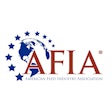Recently the US Food and Drug Administration (FDA) announced it will begin accepting generally recognized as safe (GRAS) notifications for ingredients for use in animal feed and petfood. Some people in the petfood industry hailed this as a positive step. Why? What does it mean for petfood?
What's GRAS?
Under FDA law, all ingredients in a food that are not approved as food additives or otherwise sanctioned must be generally recognized as safe. To be GRAS means there is sufficient publicly available information on the ingredient so experts qualified to make the determination would agree as to its safe use for its intended purpose.
GRAS status can be based on a history of safe use in food commonly consumed in the US prior to 1958 (the year the Food Additives Amendment was enacted). More often today, though, a substance is deemed GRAS on the basis of scientific proceduresfor example, feeding studies or other testing. Since it must be generally recognized, the bulk of this information must be in the public domain, such as publication of studies in a scientific journal.
The need for speed
In 1997 the FDA proposed regulations that would eliminate its GRAS affirmation process in favor of a new notification process. Although the rules have never been finalized, the FDA has been accepting GRAS notifications for human food ingredients for the past decade. On the other hand, the Center for Veterinary Medicine (CVM) within the FDA has not been accepting either notifications or affirmation petitions for animal feed or petfood ingredients.
The affirmation process is very similar to the food additive approval process in that a sponsor submits all pertinent data on that ingredient for the FDA review. When and if the FDA concurs, the ingredient's GRAS status is published in the form of a regulation. This is typically a lengthy and arduous process.
In the notification process, sponsors must still collect all pertinent information and conduct an evaluation to determine whether a substance is GRAS. This is usually done by convening a panel of unbiased experts in the field (e.g., toxicologists, nutritionists) to render an opinion. Assuming the panel concurs about the ingredient's GRAS status, the sponsor notifies the FDA of its findings.
The FDA does not do an independent evaluation and does not say it agrees with the sponsor that the substance is GRAS. However, the FDA will say it "has no questions" about the sponsor's determination. In regulatory-speak, this is the closest you can get to "no objection."
The primary advantage of this notification method is speed, at least compared to the affirmation process; we're talking months vs. years. Unlike the affirmation process, though, the FDA does not issue a regulation as a result of its findings. However, the agency has been publishing its findings for human food GRAS notices on its website, so whether a substance has been subject to a GRAS notification can be easily ascertained.
Why bother with a notice?
Technically, the GRAS notification process is voluntary. An interested party may conduct a self-determination of GRAS and market that ingredient without informing the FDA. However, submitting a notification has distinct advantages.
Perhaps the most important benefit is that the notice becomes known to regulators. While the notice doesn't result in a new regulation, there will be a record of its submission to the FDA and the FDA's response; I am assuming the submissions for use in animal feeds will be published on the Internet, the same as is currently done for human foods.
The hope is the Association of American Feed Control Officials could also publish this list in its Official Publication . That way, all state feed control officials can be aware of the ingredient's GRAS status. Otherwise, state feed control officials may be reluctant to accept the findings of a self-determination and refuse registration of products containing the ingredient.
Burden of proof
The potential disadvantage of a notification is that the FDA may not agree with your determination. Instead of responding that it has no questions, it could say the submission "does not provide a sufficient basis for a GRAS determination."
That response could happen because the notice did not include appropriate data and information or because the available data and information raised questions about the safety of the notified substance. However, if a "no questions" finding appears unlikely, a sponsor can withdraw its notice before the FDA reaches a negative finding. That would allow the sponsor to conduct further evaluation and resubmit the notice at a later time.
Whether a substance is the subject of a GRAS notification or a self-determination, the burden of proof is the same. Under FDA regulations, the scientific evidence of safety must be the same quantity and quality as required for a food additive approval. In fact, a GRAS determination may be more burdensome, since the majority of the data must be publicly available, rather than from unpublished studies.
When can I notify FDA?
To implement this new process, CVM must hire new personnel to handle the increased workload. It anticipates that it will be ready to accept notifications by late summer this year. Since it is neither easy nor quick to prepare a notification, it behooves petfood companies and suppliers that may be interested to become familiar with the process now.














